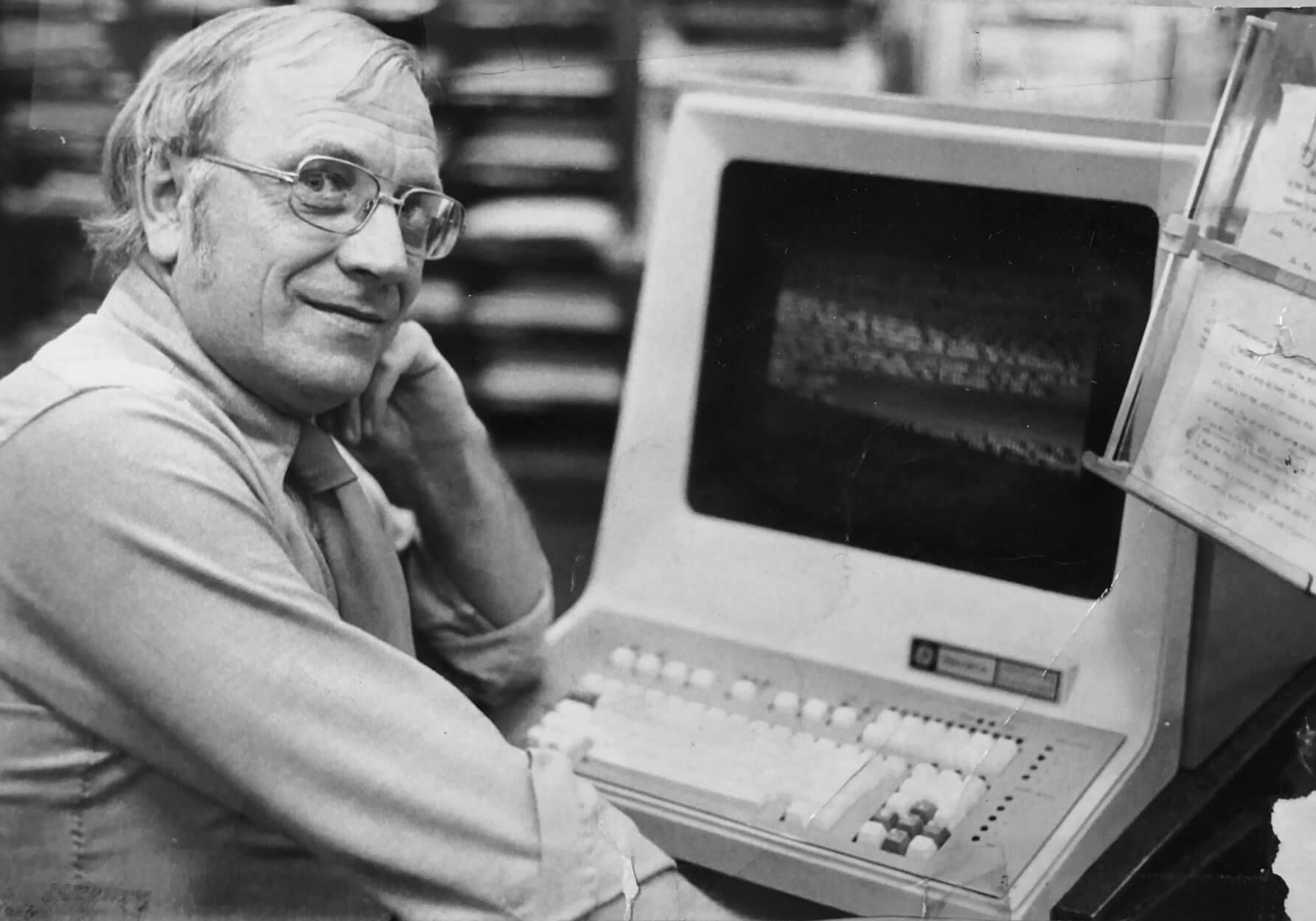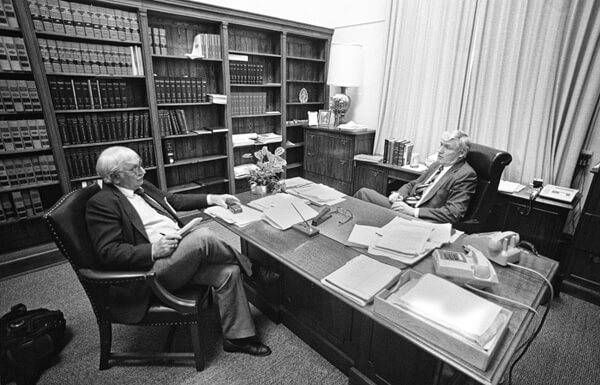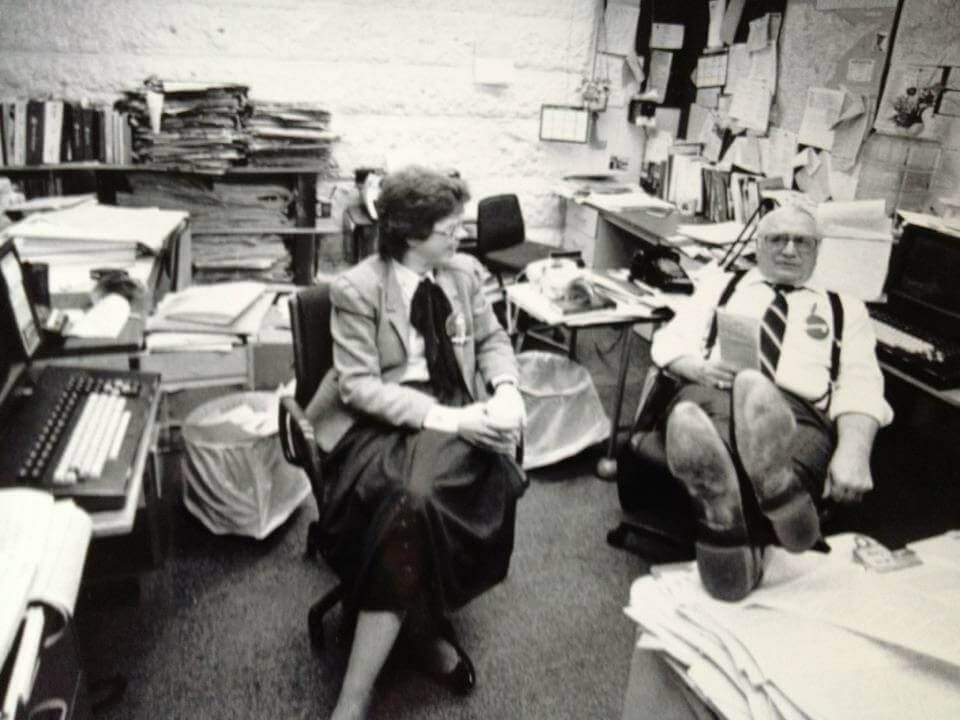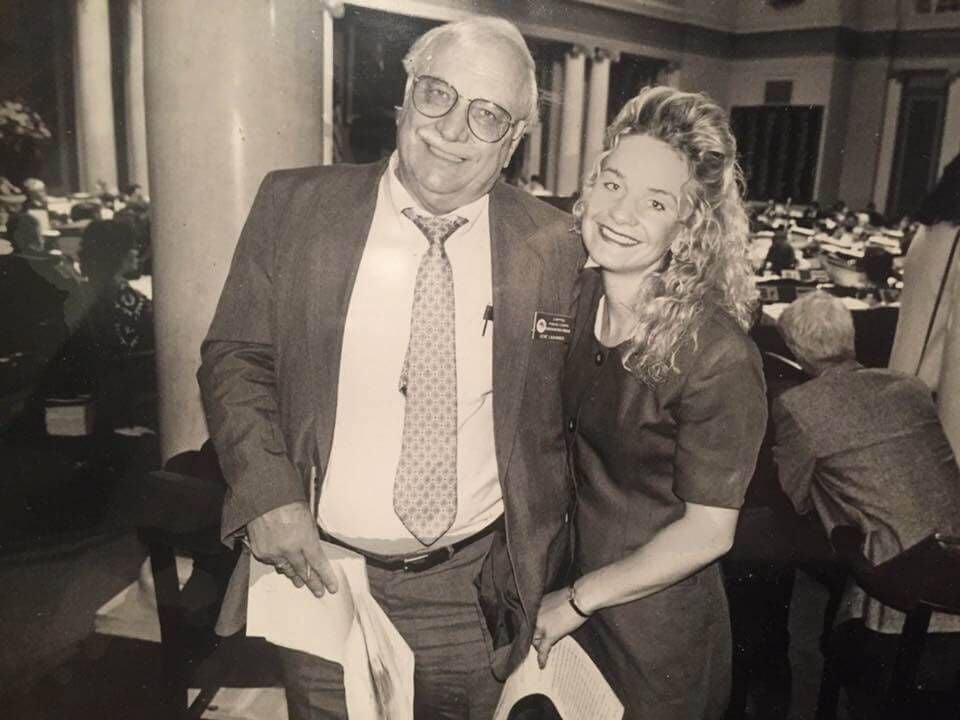Gene's American Dream: Journalism & Justice

Mary Lahammer is a longtime political reporter for Twin Cities PBS. She followed in her father's footsteps at the Minnesota State Capitol, where he was known as a legendary reporter after 34 years with the Associated Press. At 85 years old, he agreed to share his life story with his youngest daughter.
"An AP man"
After wrapping up his top-secret military service and college studies, Gene Lahammer's ambitions to be a journalist landed him in Sioux Falls, South Dakota, where he worked part-time as night editor for the Associated Press in 1961 before his boss recommended him for a full-time opening on the Fargo, North Dakota staff. Bureau Chief George Moses wrote, "I'm shy about making predictions on this one, but Lahammer seems a good bet." That assignment was simply hard work according to the budding journalist. He wrote in his application, "I'm confident that once I master the routine, I'll be able to do the job expected of an AP man." In 1965, Lahammer transferred to the Minneapolis Bureau, where he yearned to tell the biggest stories of the day: "I quickly became the writing star unbeknownst to me."

Lahammer finds his footing
Lahammer helped cover the 1966 DFL State Convention when Lt. Gov. Sandy Keith wrestled the endorsement from Gov. Karl Rolvaag. "It was a bloody fight," Gene says, adding that the experience only increased his zest for covering politics. In 1971, the state faced the longest special session in state history and resulted in the "Minnesota Miracle," the historic funding concept for equitable school education statewide. Cutting his teeth on the drama of local politics, Lahammer became a year-round Capitol reporter by 1978. "I loved it," he says. For him, the challenge of covering a legislative session was "like being on a wonderful treadmill." His work focused on neutrality, allowing both sides to have a voice, an approach that earned him a respected reputation. "I tried to be fair to both sides. I worked hard and fast on it."

One of his most memorable stories was covering the funeral of civil rights leader and Vice President Hubert H. Humphrey, who Gene had covered for years. The reporters from D.C.'s national desk took the indoors assignments, but Lahammer was willing to brave the bitterly cold snow at the burial site in Minneapolis to say farewell to the legendary politician. He came back to the office nearly frozen after standing outside for hours at the cemetary, his hands were numb, he rubbed them together and said to himself, "Hubert, this one is for you." Gene then felt the story tell itself, he hit the typewriter keys to say, "Hubert H. Humphrey's final resting place is a grassy knoll overlooking the city where he launched his career as a crime-busting mayor 25 years ago."

Changes in the Legislature and the Capitol Press Corps
When Lahammer first arrived at the Capitol, he noted the homogeny of Minnesotans who held office at the time: "There was only one woman in the then 202-member Legislature during my first session in 1971," he wrote. He would come home with stories of the first female lawmakers as smart, tough, competent. "They were brave and they had to be because they were [perceived as] intruding into a man's world," Gene recalls. More women were also hired into the Capitol Press Corps, and Lahammer welcomed them. Star Tribune journalist Lori Sturdevant recalled that Gene was particularly kind and says, "When I arrived in the Capitol's basement press room in 1979 as a somewhat intimidated 25-year-old, I found a warm welcome in the Associated Press cubicle. Gene Lahammer and his partner Gerry Nelson were very highly regarded Capitol reporters. Every other news organization's crew looked up to them for both their reporting and their writing ability. But there was no note of superiority in how Gene and Gerry treated me or the other comparative rookies in the basement."

A welcoming neighbor and friend
At home in St. Louis Park, Lahammer also welcomed diversity and stood up for what he thought was just and right. When the Ellises, one of the first African-American families in their suburban neighborhood, moved in, he served as an anti-discrimination advocate. Dr. Ellis was chief of surgery at a Minneapolis hospital and Mrs. Ellis was involved in a slew of civic and cultural initiatives. When a neighbor approached Gene to say, "We don't want any more of them moving here," Gene responded with "Isn't it great a doctor moved into the neighborhood!" That quickly silenced the neighbor and helped welcome the new family into their lives.
Gene and Karen Lahammer were active in their local church at First Lutheran holding various leadership positions, though many of their friends and neighbors were members of different faith communities; Gene embraced their relationships with their Jewish neighbors. One of his closest friends was the late Bernie Simon, for whom Gene ran an unsuccessful campaign for school board. Lahammer was urged to run for school board, himself, and instead told LaDonna Reynolds she would be a better candidate. He ran her campaign twice, and she served 12 years on the school board. Reynolds says Lahammer was "an excellent voice in leadership. I'm so grateful for all he did."
Start at the beginning of Gene Lahammer's story with Gene's American Dream: Poverty & Perseverance. Or explore his top-secret military service or his post-war adventures in college. Stay tuned for the fifth installment, which will cover retirement work for the Star Tribune and the New York Times.
